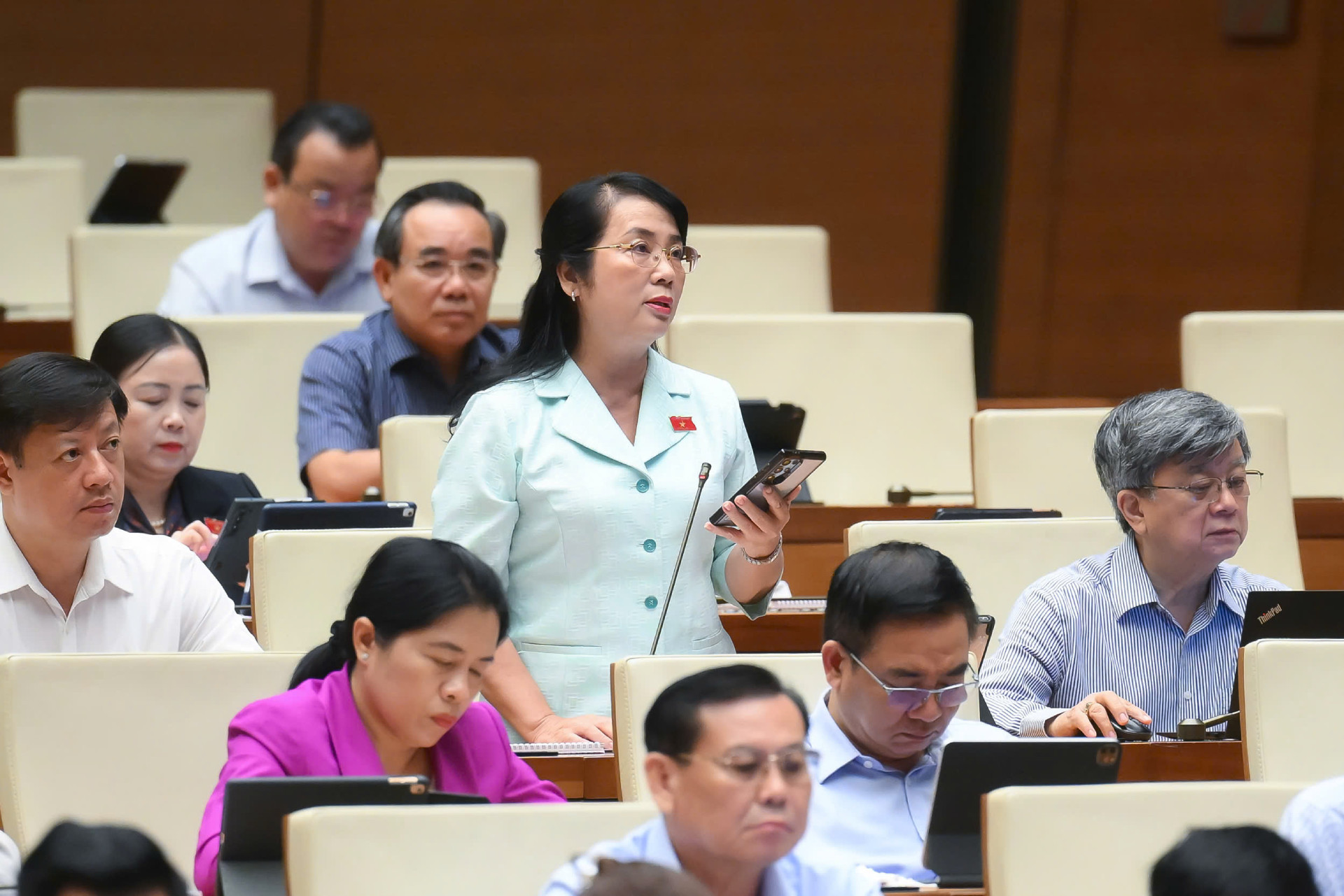During a parliamentary session, lawmakers questioned Finance Minister Nguyen Van Thang about ongoing issues in disbursing public investment despite available funds.
Representative Tran Kim Yen from Ho Chi Minh City noted that international organizations have lowered global growth forecasts by 0.5 to 1%. Meanwhile, Vietnam has set an ambitious growth target of over 8%, posing a significant challenge.

Representative Tran Kim Yen. Photo: National Assembly
One of the Ministry of Finance’s key strategies is to effectively unlock and utilize public investment resources. However, despite government efforts, disbursement remains low, prompting public frustration over unused funds. The delegate asked the minister for more practical solutions to meet the 8% growth goal.
Responding to the query, Minister Nguyen Van Thang stated that current public investment disbursement is not low compared to last year’s figures. "The government has recognized the difficulties and issued several urgent directives. In the first five months, we disbursed nearly 200 trillion VND (approximately 7.85 billion USD), reaching a rate of 24.1%, compared to just 22% during the same period in 2024," he said.
He emphasized that all national key projects have met or exceeded disbursement schedules. He attributed low figures in the first quarter to more than 10 public holidays and a sluggish post-Tet atmosphere, which traditionally slows operations. Nevertheless, disbursement has since regained momentum, both in relative and absolute terms.
The minister proposed three core solutions to improve public investment efficiency. First, remove legal barriers related to land, construction, planning, and administrative procedures. “The government has proposed amendments to the Public Investment Law to enhance decentralization and empower agencies and localities,” he said. Prime Minister directives now assign specific responsibilities to ministries and local governments to resolve these challenges.
Secondly, disbursement performance will become a key criterion in evaluating agencies’ and individuals’ performance in 2025. Additionally, steering committees will continue reviewing and resolving key project obstacles.
Sustainable approach to industrial zone development

Finance Minister answering parliamentary questions. Photo: National Assembly
Representative Dang Bich Ngoc from Hoa Binh raised concerns about enterprise development in the current difficult economic climate. Many companies are exiting the market, hindering Vietnam’s goal of reaching 2 million active businesses by 2030. She asked the minister for measures to improve both the quantity and quality of businesses.
Minister Nguyen Van Thang explained that the goal, set out in the Politburo’s Resolution 68 and adopted by the National Assembly, is crucial for socio-economic growth. However, it poses major challenges amid weakened demand and difficult business conditions. He emphasized the need for determination and decisive action due to weak business competitiveness.
In the first five months of the year, a large number of businesses exited the market. He outlined three strategic solutions: creating a transparent, efficient business environment; removing administrative barriers; and cutting compliance costs. The government must also review investment, business, and planning regulations to facilitate market participation and promote digital transformation.
He highlighted the critical role of converting household businesses into companies, noting that more than 5 million households are currently active. This represents the biggest potential to achieve the 2 million enterprise target. The Ministry of Finance is finalizing regulations to narrow the gap in management, finance, and accounting between household businesses and registered companies. From 2026, lump-sum tax will be abolished.
New policies will include three years of corporate tax exemptions, exemption from business license taxes, and free accounting software to strengthen management capacity. Enterprises will also benefit from land, capital, technology, and digital transformation support to remove bottlenecks and enhance resilience.
Managing industrial land resources wisely
Representative Nguyen Van Danh from Binh Duong emphasized that land is a finite and critical national resource. He noted that some industrial zones remain inactive or face difficulties in attracting investment. Others lack sufficient land despite having investment potential. He asked for solutions to optimize land use in industrial zones.
Minister Thang reiterated the principle of not expanding industrial zones at all costs. Current regulations prohibit new zones in provinces where existing ones have less than 60% occupancy. This ensures balanced regional distribution and avoids idle infrastructure. Localities are encouraged to adopt environmentally friendly industrial models.
The minister said flexibility should be institutionalized for underprivileged areas or provinces with less than 1,000 hectares of industrial zones. Special investment incentive zones will be allowed exceptions. Overall, all policies must ensure efficient land use.
Tran Thuong - The Vinh